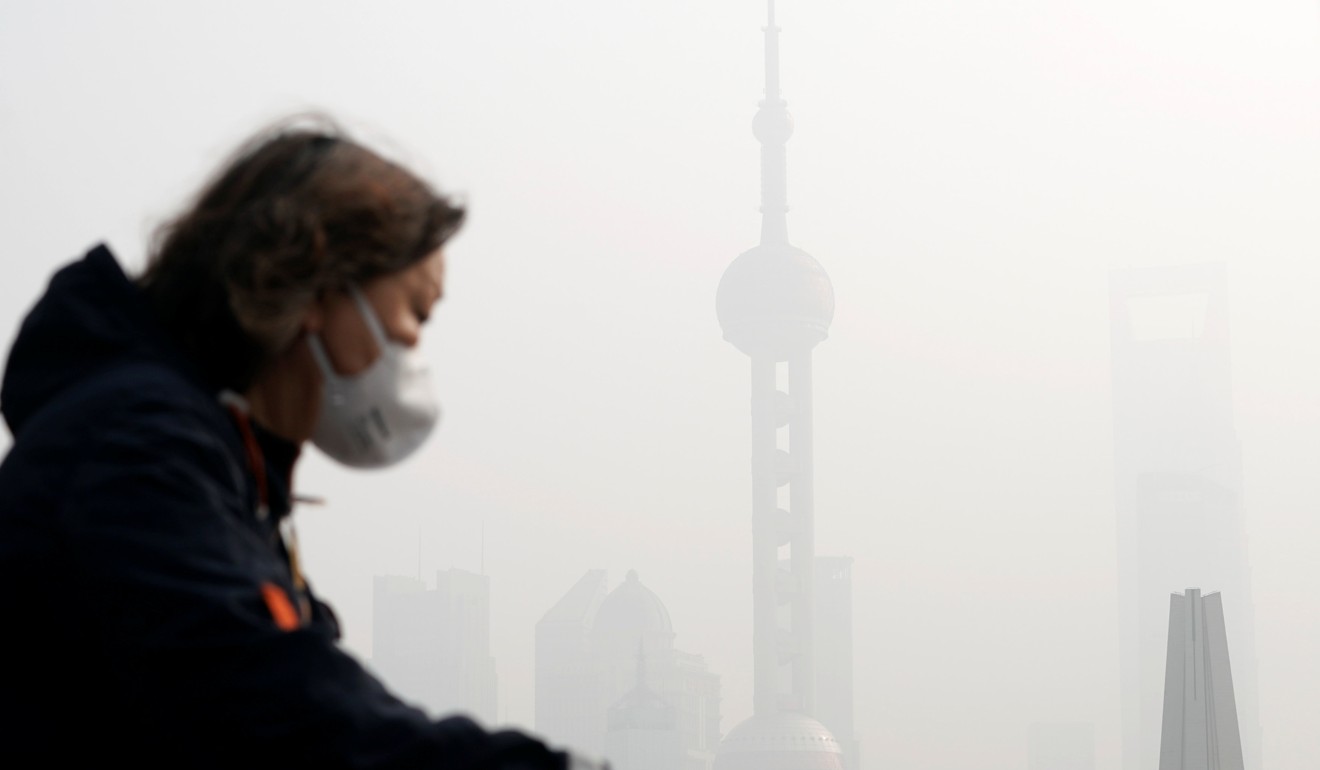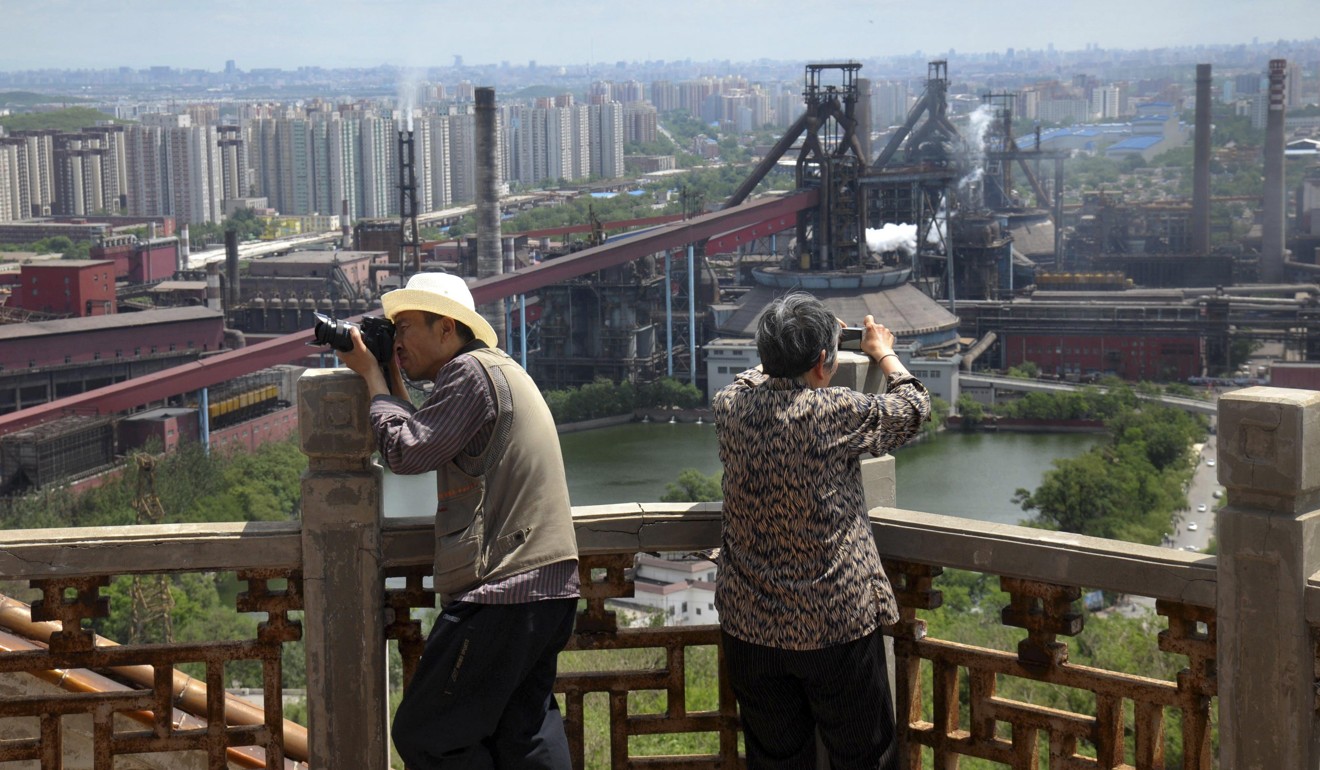
China’s fight for clean air gets more complicated after scientists link fall in PM2.5 pollutants to rise in crop-damaging ground-level ozone
- Joint US-Chinese study suggests that drive to reduce most harmful particles in the atmosphere is something of a double-edged sword
- Researchers say there is a relationship between a drop in PM2.5 levels and the rise in ground-level ozone pollution, which can reduce crop yields
China’s war on air pollution may have hit an unwelcome snag after new research suggested that reducing the most dangerous small particles in the air had the side effect of increasing ozone pollution on the ground.
The findings could have major implications for the global battle for cleaner air after scientists concluded there was a link between lower levels of fine particulate matter – also known as PM2.5 – and a rise in ozone levels.
In 2013, China put in place stringent policies to regulate PM2.5 levels. They have been so effective that they led to a fall in pollutant levels of as much as 40 per cent in some places, according to a new joint research project between Harvard’s School of Engineering and Applied Sciences (SEAS) and the Nanjing University of Information Science & Technology (NUIST).
However, a rapid fall in PM2.5 levels, which can cause serious damage to the respiratory system, proved to be a double-edged sword.

The study, published in the Proceedings of National Academy of Sciences, found that there had a been a sharp rise in harmful ground-level ozone pollution, one of the main components of the notorious smogs found in China’s biggest cities.
“Before, it was a hypothesis among scientists that PM2.5 affects ozone in some ways but we were not certain about it. We have conducted all sorts of tests and the results have answered the pertinent question that there is indeed a cause-and-effect relationship between PM2.5 and ozone pollution,” said Liao Hong, a NUIST professor and a co-author of the study.
Dr Li Ke, lead author of the study, said PM2.5 particulates absorbed gases such as nitrogen dioxide that helped generate ozone.
“The main factor in ozone concentration is volatile organic compound (VOC) emissions, which have not received enough attention. If these emissions are well controlled, ozone pollution will not rise so rapidly,” Li said, explaining the unintended effects of China’s air quality policies.
Bad weather blamed for worsening smog in Henan province
Scientists from the US and China examined data gathered from more than 1,000 air quality monitoring stations across China before drawing the conclusion.
By sifting through information collected by Beijing’s Ministry of Ecology and Environment, the scientists noted that ozone pollution has shot up significantly in the past few years while other key emissions and pollutants – fine particulate and particulate, carbon monoxide, nitrogen oxide and sulphur dioxide – have all fallen.
While ozone in the upper stratosphere protects humans from the sun’s ultraviolet rays, high concentrations of ozone at ground level harms people’s lungs and eyes and can damage the immune system. It also negatively affects crop yields.

Li, a postdoctoral fellow in environmental science and engineering at SEAS, said the findings would be important for policymakers in formulating effective air quality control measures.
Liao said ground-level ozone was a greenhouse gas that contributed to global warming, but further studies were needed as there was a general lack of data and research on the pollutant.
She said although scientists have conducted studies on how to control ozone – for example, in the city of Nanjing – but China generally lacked data on VOC emissions in cities.
By contrast, she said that while the southern province of Guangdong has been relatively successful in controlling air pollution, it had still seen an increase in ozone pollution.
Diesel trucks in cross hairs as China looks to reduce emissions
“We still have a long way to go in our efforts to control PM2.5 pollution,” Liao said. “And the impact of ozone concentration [on air quality] has become increasingly noteworthy.”
The latest study was only possible because China started an aggressive nationwide campaign in 2013 to combat air pollution and reduce smog.
The government imposed strict controls, including the use of renewable energy and natural gas to replace coal-fired power generation and stringent measures were imposed to regulate the use of cars in major cities.
At the same time, a massive air quality monitoring network was established to collect a huge quantity of environmental data across the country.

According to some independent studies, exposure to PM2.5 particles is estimated to cause more than a million deaths across China each year.
But Feng Zhaozhong, a professor at the Research Centre for Eco-Environmental Sciences at the Chinese Academy of Sciences, warned that ozone pollution was more harmful to the ecosystem than PM2.5 and had serious implications on China’s food security.
His experiments suggested that higher ozone levels could reduce wheat yields by as much as 20 per cent, and would have a similar effect on rice and soybeans.
For now, he said, any potential production losses were offset by an increased use of fertilisers and irrigation – safeguards that have their own environmental downside.
Chinese nature reserve bans release of exotic fish over eco threats
“Ozone is a pollutant [that contributes] to the destruction of ecosystems and also causes a decrease in plant biomass, thus having an indirect contribution to climate warming,” he said.
Ma Jun, director of the Institute of Public and Environmental Affairs, a Beijing-based environmental protection research NGO, said that to control ozone pollution, the authorities needed to adopt effective emissions reduction measures and force businesses to disclose emissions data – especially concerning VOCs.
“Lax monitoring of businesses is a serious problem,” Ma said.
According to Ma, China’s battle against air pollution in the coming two years is likely to continue to focus on restructuring of industries (phasing out heavy polluters), development of greener sources of energy (renewable and natural gas) and transport (electrification of railways and new energy vehicles).

